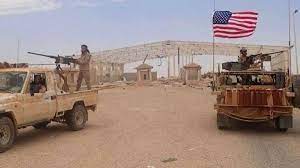Field sources familiar with the situation in eastern regions of Syria have revealed several challenges facing the U.S. occupation’s plans to advance militarily on the ground and connect its illegal military base in the Tanf area, located at the triangle of Syrian borders with Jordan and Iraq, to the areas of Deir-ez-Zor and the city of al-Boukamal. These areas house the only border crossing between Syria and Iraq. Despite rumours about the U.S. occupation sending trained militants from the Tanf base to areas controlled by the Syrian Democratic Forces (SDF) east of the Euphrates River, the sources downplayed the significance of such reports.
Assad Visits Newly Constructed Power Plant in Baniyas, Amid Sharp Electricity Crisis
The administration of U.S. President Joe Biden is cautious about engaging in any military ventures to expand its influence in eastern Syria, given the potential material and human costs associated with it. While Biden may desire a military and moral victory to alter the control map in a critical region for both Russia and Iran, boosting his chances in the upcoming U.S. presidential elections, the sources suggest that Washington is hesitant to involve its occupation army directly on the ground. Instead, they prefer to rely on local allies to avoid potential human losses, as the distance between Tanf and al-Boukamal is considerable, making any movement through the vast Syrian desert challenging and risky, especially in the face of possible resistance and opposition from the Russian Air Force.
During a meeting with his Iranian counterpart in Tehran, Minister of Foreign Affairs and Expatriates Faisal al-Mekdad called for the U.S. occupation to withdraw from Syria voluntarily, implying that the Syrian Arab Army and its allies would not tolerate any military actions by the occupation army on Syrian territory.
Recent conflicts between the SDF and the Deir-ez-Zor Military Council have revealed underlying tensions and differences between Arab tribes and militias due to the marginalization of the former and the concentration of power within the General Command of the SDF. Washington’s attempts to enlist support from Ankara’s “National Army” to bolster its military operations in the east may not succeed, as it goes against the interests of Turkish President Recep Tayyip Erdogan, who rejects the SDF’s presence and views them as a terrorist organization.
Regarding the leaked news of the U.S. occupation sending militants from the Tanf base to SDF-controlled areas east of the Euphrates River, it indicates the occupation’s struggle in forming an effective force capable of advancing from Tanf to al-Boukamal or across the river. These militants heavily depend on the cooperation of the SDF and cannot move independently, as the SDF is unwilling to risk any military actions outside its areas of influence, even in conjunction with the American occupier.
This article was translated and edited by The Syrian Observer. The Syrian Observer has not verified the content of this story. Responsibility for the information and views set out in this article lies entirely with the author.


